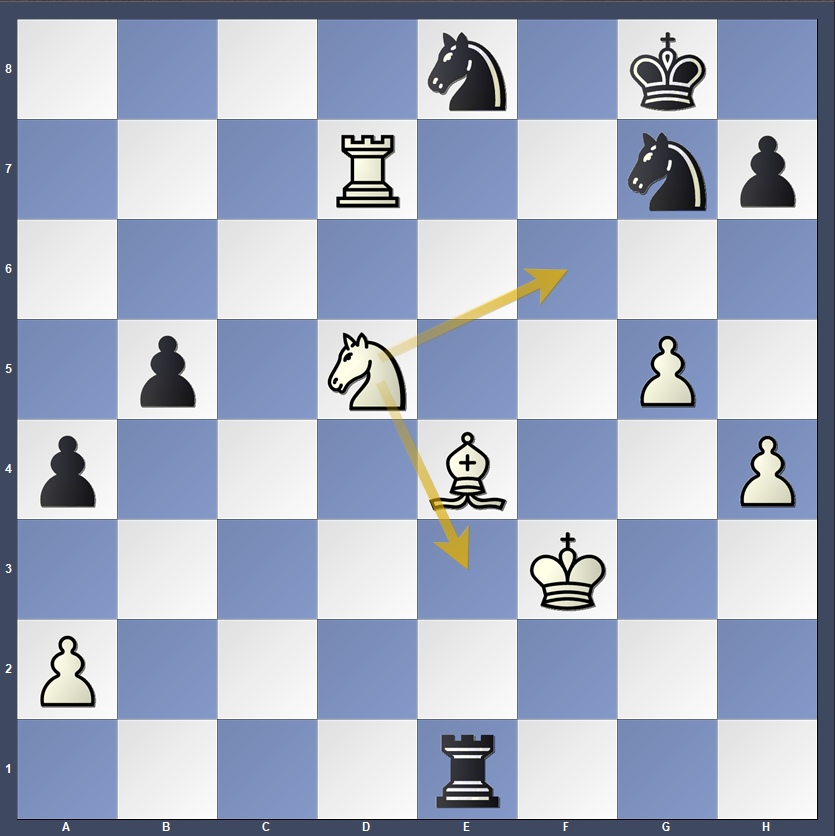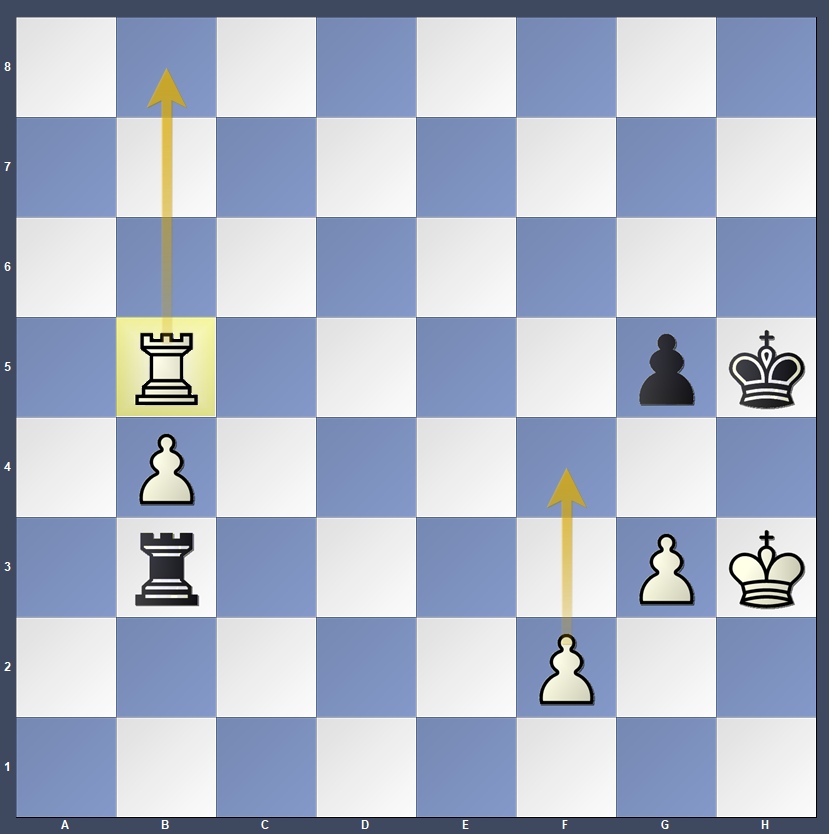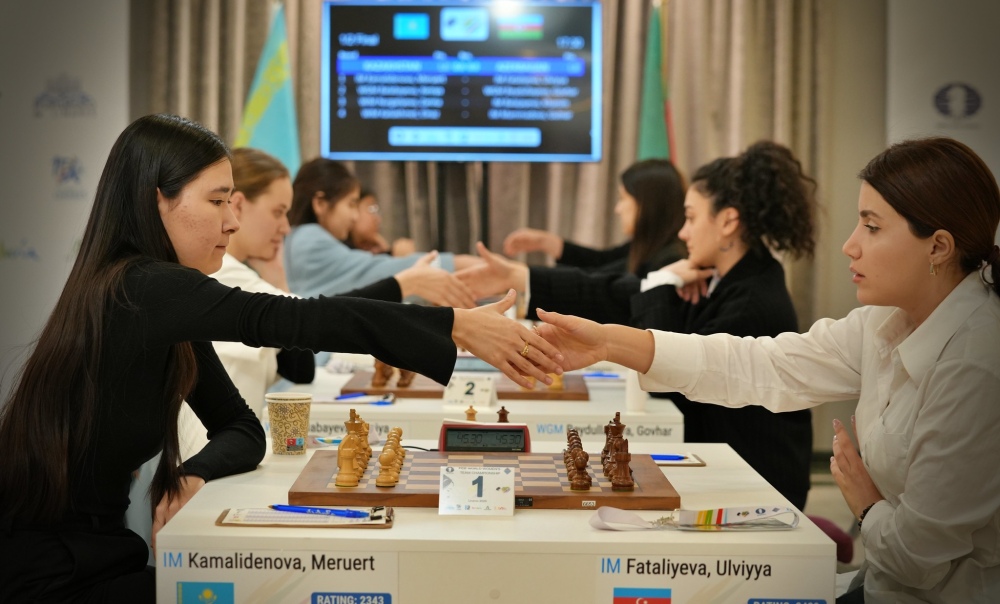
Team FIDE outlast China as Azerbaijan survives a heart-stopping tiebreak against Kazakhstan.
The penultimate day of the Women’s World Team Championship delivered exactly the drama one expects from a tournament of this calibre.
Team FIDE moved confidently into the final after overcoming China in two tight 2.5–1.5 matches, driven once again by the unstoppable form of Polina Shuvalova.
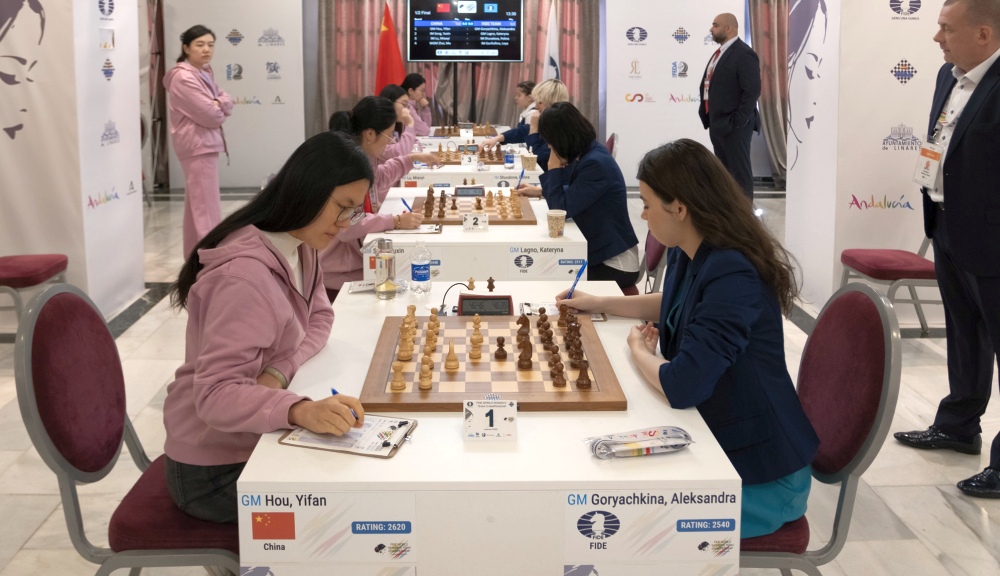
On the other side of the hall, Azerbaijan and Kazakhstan battled deep into the tiebreaks, producing a roller-coaster duel that ended with Azerbaijan’s well-earned blitz tiebreaker victory.
It was a day marked by courage, precision, and the fine margins that so often define knockout chess. With these results, the final line-up is confirmed:
Final: FIDE Team vs Azerbaijan
Third-place match: Kazakhstan vs China

Let’s look at how the afternoon unfolded in greater detail in each pool.
The gong ceremony to open each of the rounds was performed by Akaki Iashvili, FIDE Special Tasks Director and Mahir Mammedov, FIDE Vice President.
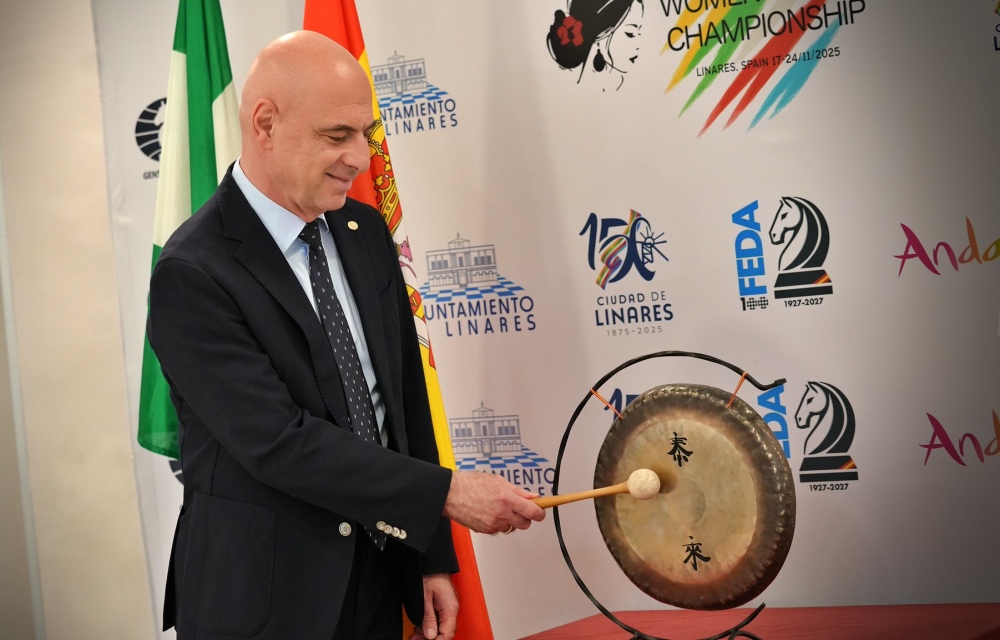
With two 2.5–1.5 victories, Team FIDE secured their spot in the final, overcoming a very tenacious Chinese squad, one blending youthful fire on the middle boards with deep experience at the top.
Once again, IM Polina Shuvalova (2472) proved to be the team’s driving force, scoring two superb victories against the talented IM Lu Miaoyi (2440). With a perfect 6/6 so far, Shuvalova is all but guaranteed the board-one gold medal, and she may well be on the verge of reclaiming her 2500 rating.
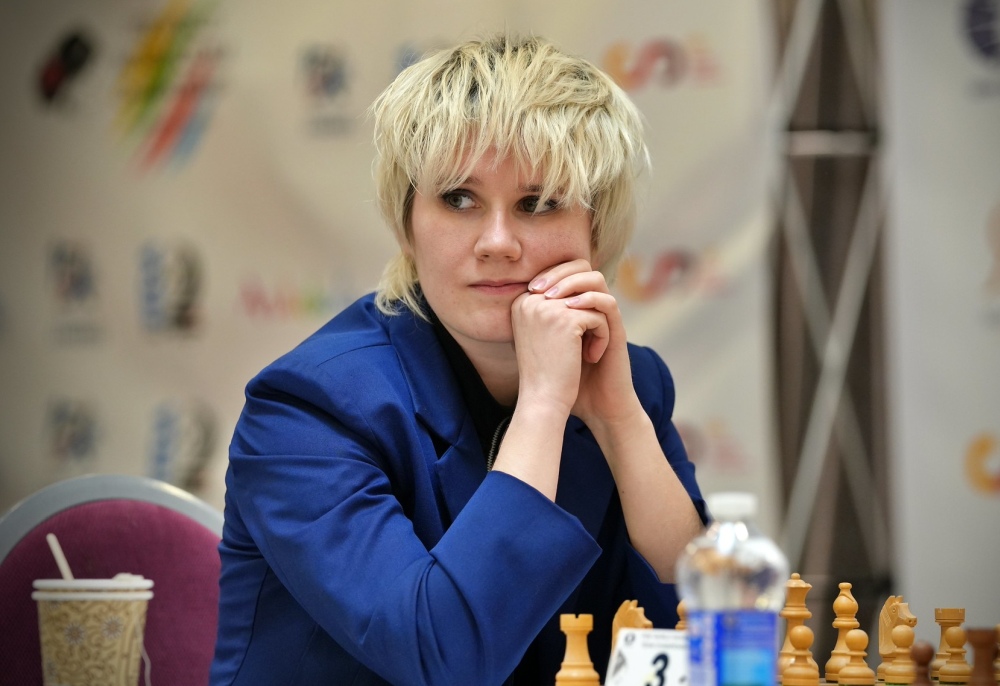
China certainly had their chances. GM Hou Yifan (2620) showcased her enduring class by defeating GM Aleksandra Goryachkina (2540), reminding everyone that her strength, despite a reduced competitive schedule, remains unquestionable.
And in the first match, the narrative could have shifted dramatically.
On board two, with Black, IM Song Yuxin (2448) had played an outstanding game against GM Kateryna Lagno (2517) and achieved a winning position.
Black enjoyed an extra pawn, superior piece coordination, and the engines evaluated the position at roughly +4.
At this critical moment, victory was within reach had Song chosen 40…f4!, advancing her kingside majority and cutting communication between the rook on h6 and the bishop on c1.
She may have feared the reply 41.Rb6, but after 41…Rc7, Black keeps the b7 pawn defended and can continue calmly with ideas such as …Ne1–d3 or …Ng5–h3, maintaining full control.
Instead, Song opted for 40…Rc6?, allowing Lagno counterplay. After 41.Rxc6 bxc6 42.c4 f4 43.b5!, White created a passed pawn just in time, forcing a draw a few moves later.
A near miss for China, and a crucial half-point saved for team FIDE, in a match where every moment mattered.
In the other semi-final match, team Azerbaijan edged out team Kazakhstan in one of the most thrilling tiebreaks I have witnessed live in a very long time. The final 3–1 score in the four-game blitz match was achieved with plenty of sweat and emotion, but it was fully deserved.
Much like in football, when a team fails to convert its chances during regular play, a last-minute strike can dramatically reverse the outcome. Kazakhstan had one foot in the final, but after missing their key opportunities, momentum slipped away, and even the introduction of GM Bibisara Assaubayeva (2513) for the blitz (despite her feeling unwell throughout the day) wasn’t enough to overcome the energy and determination of the Azerbaijani squad.
In the classical portion, both teams had real chances to score a win in the first match, but in the end, all four games were drawn.
Kazakhstan’s WIM Elnaz Kaliakhmet (2274) played a superb positional game against IM Gulnar Mammadova (2338), handling the queenless middlegame and ensuing endgame with great finesse.
Her control of the position, especially with the rook anchored on the seventh rank, looked promising, and from my seat directly behind her, I found myself instinctively searching for the ideal route to bring the bishop to d5 to convert the advantage.
Then came 43.Nf6+, a move that would have been a brilliant finishing touch, if not for the simple refutation 43…Nxf6 44.gxf6 Rf1+!, after which Black regains the f6 pawn and equalizes.
A more accurate and patient choice was 43.Ne3!, preparing 44.Bd5+ and the devastating 45.Rf7!. In that line, White’s threats multiply rapidly, and converting the advantage would have been only a matter of time.

A heart-breaking miss for Kaliakhmet, and one of several moments where Kazakhstan’s path to the final slipped away at the last possible moment.
The second classical set left Kazakhstan’s third board (and team captain) heartbroken. With 1.5-1.5 on the scoreboard, spectators were already sensing that Kazakhstan would prevail without a tiebreak.
In this position, 55.f4! is a clear win, picking up the pawn on g5 and basically forcing resignation. WIM Zarina Nurgaliyeva (2310) chose 55.Rb8, which also is winning, but let’s continue.
A few moves later, already with the pawn on b7, things are not so simple.
The only way to win now is to play 60.Kh2! and now if 60…Kg7 then White can play 61.Rd8! Rxb7 62.Rd4 picking up the g-pawn with an easy technical win with the two connected passed pawns.
Alternatively, if 60… Rb2 we use triangulation to transfer the turn to the opponent with 61.Kg1 Rb1+ 62.Kg2 and the position is zugzwang. Now, if Black moves the king to g7, then we pick up the g-pawn as before, and if Black waits with 62…Rb2 then 63.Kf1! and we head out into the open with the king with a winning ending. Not so easy!
Unfortunately, Nurgaliyeva chose precisely this moment to play 60.f4?, which is now a big mistake as after 60…gxf3 61.Kxf3 Kg7! this is a theoretical drawn position as there is no way to make clear progress.

The final and third-place playoff will start on November 23 at 11:30 AM local time, two hours before the usual starting time.
According to the regulations, each duel consists of two matches with the same time control as the qualifying stage: 45 minutes per player for the entire game, plus a 30-second increment per move starting from move 1.
In the event of a drawn duel – either if each team wins one match, or both matches are drawn – board points will not be used as a tiebreaker. Instead, blitz matches will determine the winner.
The action can be followed live on the FIDE YouTube Channel, featuring expert commentary by GMs Antoaneta Stefanova and Ivan Cheparinov.
Official website: worldwomenteams2025.fide.com/
Written by IM Michael Rahal
Photos: Raúl Martínez / Pavel Dvorkovich




